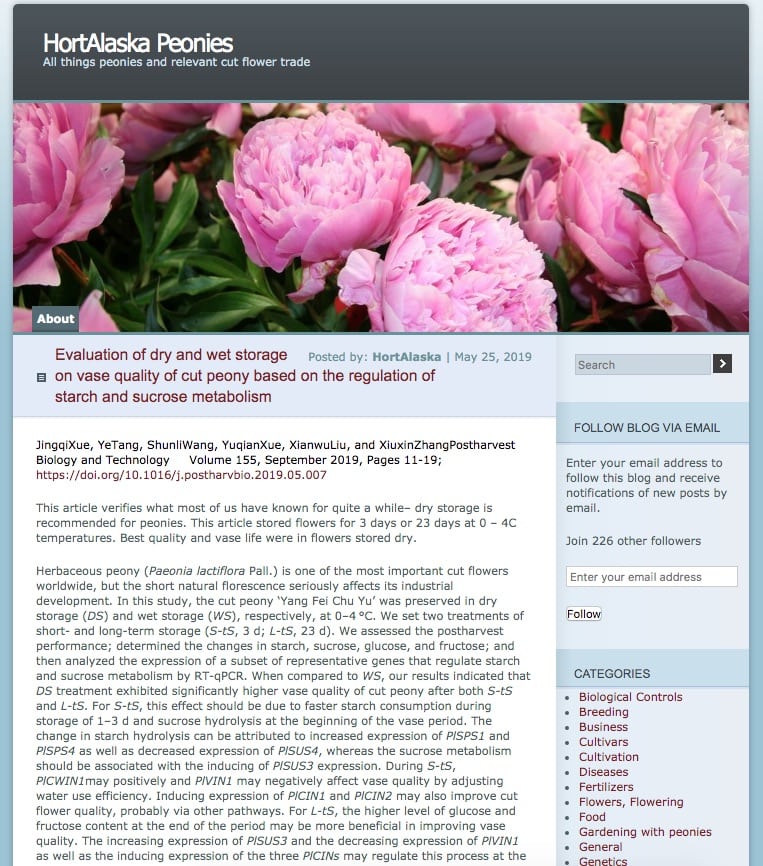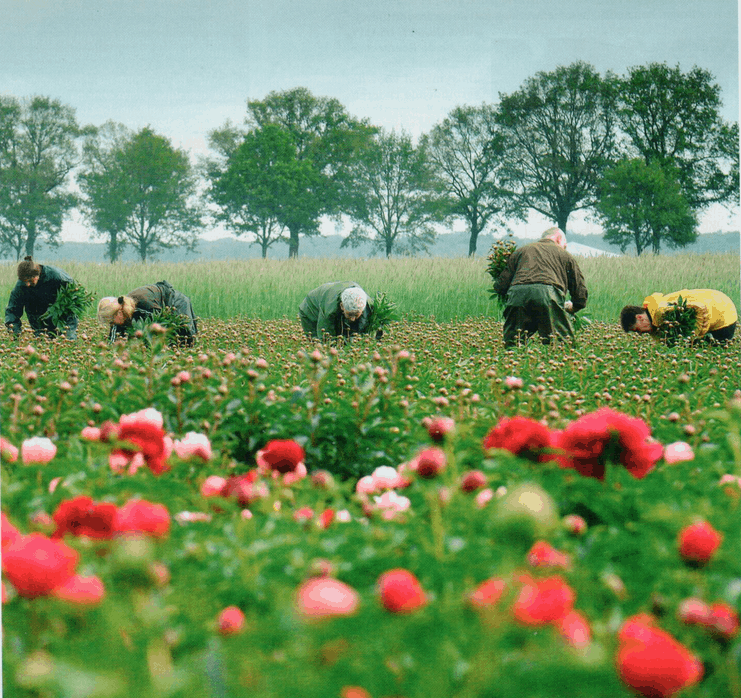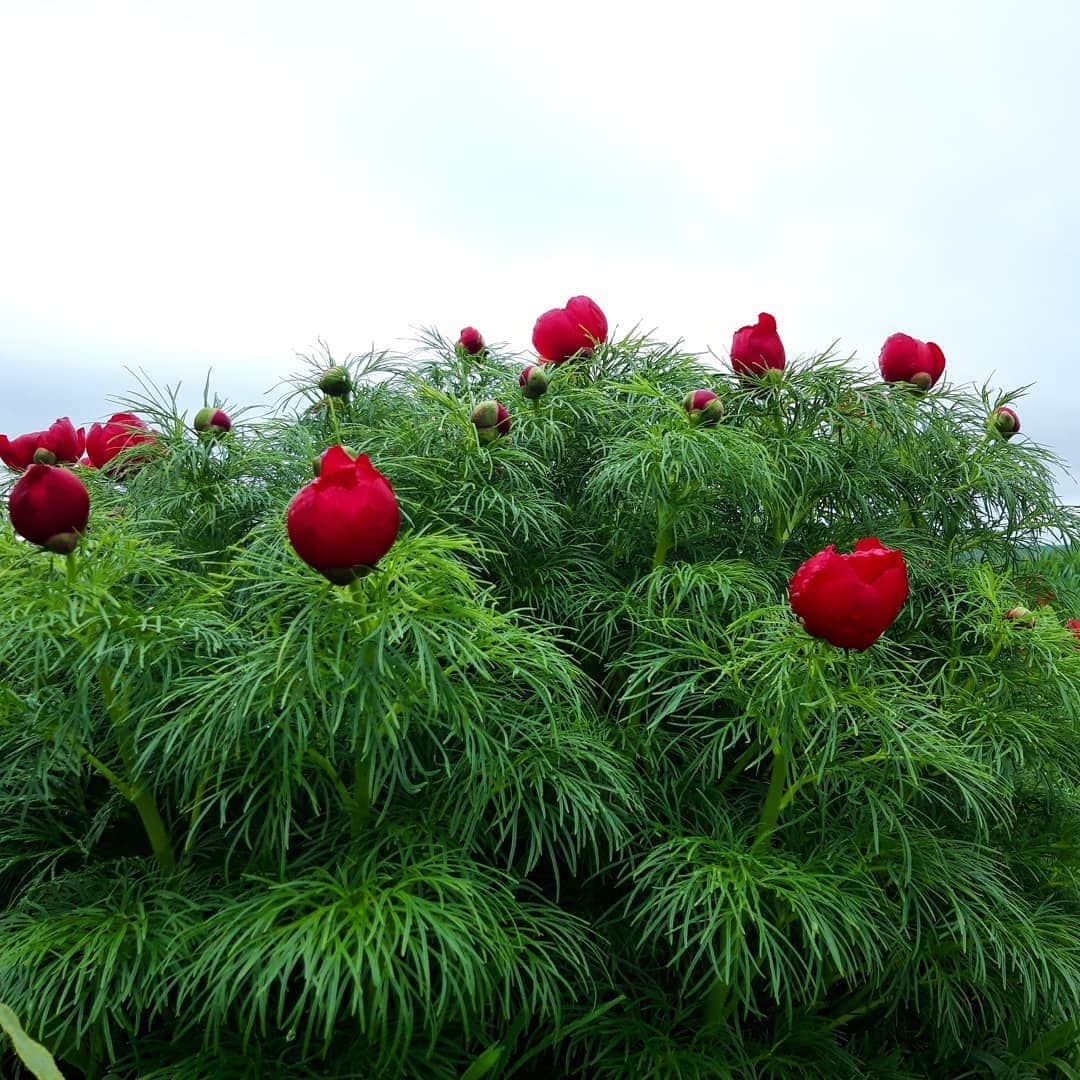-
Membership registration for the site is currently disabled as the filters blocking the spam registrations seem to have issues and some false registrations do get through (we’ve just deleted them). Those who are a member already, can still log in. If not a ‘member’ and you’d like to be, then for now send us a message on facebook. To view the site,…Read More
-
Paul wrote a new post
3 Comments-
Dear Bob
Thank you for your comments and for taking the time to write them down. It is certainly nice to know that there is another soul or two out there interested in peony hybridising. Sorry about the delay in replying – I’m afraid I’m very low tech and especially hopeless at typing ! In the mean time we’ve had another flowering season ( always beautiful ) with cutting flowers and trying to breed peonies – they’re not particularly compatible activities.
Some comments on your comments. I think 100 plants from any given cross that you are seriously interested in is a good number – I aim for that – and that should more or less tell you what the cross can do.
I muddle along with reds too, except I have had difficulty with fertility i.e. with getting seeds. I have also struggled to get nice sealed ( non cabbage ) buds. Basically most of my reds have The Mackinac Grande in them but I find TMG not very fertile and very slow to germinate i.e. seed will be sitting in the ground for several years.
Digging on strict rotation must be a bit frustrating. I hang on to mine for ages and struggle with all the plants to care for! They do build up in numbers and there is probably some happy management medium but I’m not sure how you decide ! However this year I did strongly notice how much difference develops between year two, three and four. Some things at year two didn’t look particularly interesting but became much better at year three. The stems seemed stronger and the flowers so much bigger and more impressive! The other benefit of seeing older plants is seeing a bit more of their susceptibility to disease. This year we had a particularly bad season for Xanthomonas ( a bacterial blight ) disease in the peonies. I think we have definitely proved this year that the disease takes off after getting late frosts. Won’t go into all the details. However it was also clear that the disease builds up in older fields, i.e. in plants that had been planted earlier , say four or five or six years ago and that the earlier flowering tets were more badly affected. Although it was a bit depressing I guess we want to know which plants are more disease resistant.
So thanks again for commenting.
Paul Simmons
-
khurtekant wrote a new post
Last year Pietertje Vriend Wagenaar was honored with the Gold Medal 2018 and thus became the 2019 peony of the year (this year the award went to Angel Emily). For me it was a bit unexpected as I would have chosen
 1 Comment
1 Comment-
I’ve had signs of this same sort of speckled pigmentation show up in some of my herbaceous hybrid seedlings. Nothing as dramatic as happened with ‘The Fawn’ but it does seem like a phenomenon which can show up in other instances too.
Bob Johnson
-
-
The Peony Society wrote a new post
A nice website about peony research is HortAlaska. Maintained by Pat Holloway it follows all good (scientific) peony publications with some remarks and readers can

-
The Peony Society wrote a new post
Today I saw some nice peony images in an Instagram post from Saaremaa Puukool, which is apparently a nursery in Estonia. They are from one particular favorite of mine, which is a double white lactiflora peony

-
And here’s a video showing what is probably France’s most famous nursery: Pivoines Rivière:
-
Still in the making is a directory of nurseries, societies and peony gardens. Takes longer than expected. Those that have grown peonies for a long time will be familiar with most specialized nurseriers, but for those only now getting into the game, it might be interesting to find more information where people can also share their experiences.…Read More
-
The Peony Society wrote a new post
A recent article in Greenity, a Dutch trade journal, talked about peony growing. Quite interesting and as nearly all visitors to this site won’t be able to understand it as it’s written in Dutch, here’s our manual

-
An article about peony growing in warmer and colder climates to lengthen the season at both sides.
1 Comment -
The Peony Society wrote a new post
- Load More Posts

The Peony Society
Activity files:
Search the site
Latest articles
-

-

-
 Organic Peonies – Off the beaten path 2024, June 28th
Organic Peonies – Off the beaten path 2024, June 28th
-

-

-

-

-

-

-































Dear Paul,
It certainly was a pleasure to read your article. Hybridizers often work in semi-isolation it seems, so it was interesting to see how many conclusions that you and I share. As you said, wonderful looking seedlings don’t always look as wonderful as they first did, when we originally saw them. “Advanced selections” from seedling beds, when grown from divisions can sometimes cause a person to wonder if the right plants were dug, or what it was that we saw in them in the first place. This is not always the case (thank goodness) but it seems to be often enough.
Like yourself, I have the looming feeling that time is short, and will try and bring promising seedlings into my breeding program as fast as I can. While it might be more prudent to wait until such seedlings have proven themselves, I think we’ve both seen the often-surprising variety that can come from even the most well-considered crosses. I consistently get a few pure white flowers when using the pollen of Old Faithful, which goes to illustrate something or other.
I’m afraid I fall victim to the “magic cross” idea sometimes, in that if I’ve produced a seedling that seems intriguing, I tend to make a whole lot of identical crosses using it’s pollen. There have been several instances where I’ve grown out over100 seedlings of a single cross, simply out of curiosity for the variety of results I might get. Often these crosses will involve pollens from the sorts of rare triploid x tetraploid seedlings you mention, as like yourself, I’m always trying to produce those as well. One other benefit from making a large number of identical crosses is that I can somewhat-reliably tell myself that I have indeed gotten a pretty fair idea of what that cross can do, what sorts of interesting trends may show up in it’s seedlings, and whether it’s really a cross that’s worth doing again or not. Which sometimes it is.
Each spring it’s always my planned intention to make certain crosses, and sometimes matters do come together where I’m able to do that, by using the mature plants I have at my home. But since my seedling beds are 150 miles away, like yourself, I also do a lot of “on the fly” hybridizing as well. While I’d rather be more well-planned-out with such crosses, I’m often forced to use whatever presents itself when I have limited time in the fields. And plan on “variation” to save the day.
As to hybridizing priorities, I seem to be putting strong stems at the head of the list more and more these days. When it comes time to do selection in the seedling beds ( the nursery digs on a strict rotation, so it’s do-or-die when selection time rolls around ) there can be a lot of plants, we often don’t have much time to consider them, and we end up going down the rows quite rapidly. In almost every instance I find that stem strength is the first thing I find myself instinctively paying attention to, as unless there is something truly exceptional about a flower, I know in the back of my mind that although there are a lot of variables to consider, seedlings with poor stems are likely to find their way to the compost pile sooner or later. The nursery is a big operation, and often it’s a long way out to the seedling beds, and one passes through many rows of classic varieties along the way. As one walks, it becomes hard to ignore the fact that hybrids which have stood the test of time generally all have good stems.
Saving plants to use in breeding is often another story though. Again, I’ll favor plants with impressive plant habit, parentage which seems promising, and if I’m using it as a pod parent, carpals that will indeed make seeds. In instances like this, often the nature of the flowers themselves sometimes seem to be my last concern. That said, it’s difficult to resist using pollen off of flowers which are “intriguing”. Even plants with bad stems can produce seedlings with stems which are good, but they’d better have a flower of some very specific interest, or I’m unlikely to use them.
As you may have seen, sometimes there is some predictability to our crosses. I’ve produced some rows of whites myself, using pollen from promising white varieties on mother plants which are not always so white. Lemon Chiffon seems to produce a lot of yellows if it even looks at anything else with the slightest hint of yellow in it, or if it looks at anything of any other color for that matter. In all my efforts, I may have produced one seedling that has yellow which is a bit deeper than that of Lemon Chiffon, so it’s encouraging that you are finding some success with that.
Nice reds seem to be a thing that I’m still fumbling around with. Crosses which by all rights should produce good reds produce muddy or purplish reds instead. I suspect there are ways around this, but I still have some ways to go with my own efforts.
In any case, it was wonderful to read about your experiences, and to read about them here on this site. In the past hybridizers seemed able to keep in touch, so it’s sort of surprising that in this high-tech era, we still seem to be looking for a good location for that.
Bob Johnson, Oregon, USA